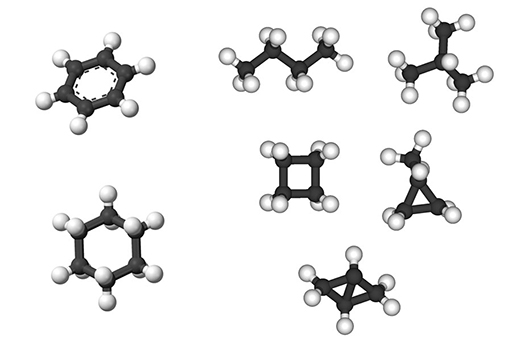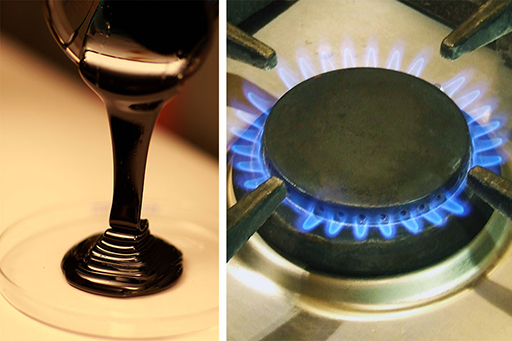3.4 What is oil?
Perhaps this week should have started with this point, but what is really meant by ‘oil’?
To a chemist, an oil is any thick liquid that doesn’t mix (is immiscible) with water. In everyday language, and throughout this course, oil is used to mean liquid petroleum (crude oil) which is, indeed, a thick liquid which won’t mix with water.
But what makes up oil? It’s a mix of hydrocarbons – compounds which contain nothing but hydrogen and carbon atoms bonded together in long chains (alkanes) or ring structures (cycloalkanes), along with other aromatic hydrocarbons and various organic compounds which include sulphur, nitrogen and oxygen. Petroleum is just a mix of lots of different hydrocarbons.
With oil comes gas (sometimes)
In liquid petroleum (crude oil), it’s mostly compounds ranging from pentane which has 5 carbon atoms and 12 hydrogen atoms (C5H12) to hexadecane which has 16 carbon atoms and 34 hydrogen atoms (C16H34). Bigger hydrocarbons are also present, and these (often quite complex) molecules tend to form solids like bitumens and tar. In petroleum it’s the size of the molecule, and the number of carbons that it contains, that determines whether it’s solid or liquid under ambient conditions.
Sometimes (quite a lot of the time, actually) petroleum also contains much smaller molecules with fewer carbon atoms. These are things like butane (C4H10), propane (C3H8), ethane (C2H6) and methane (CH4). All of these, because of their small size, have boiling points below 0 °C, and so are gases under ambient conditions. These are what make up ‘natural gas’. It’s called natural gas to distinguish it from gas manufactured from coal, which was common in many countries prior to the development of large scale oil production.
Natural gas is an incredibly versatile fuel. It has a high calorific value, meaning you get a lot of energy from burning it. It also burns fairly cleanly (producing just water vapour and carbon dioxide) and, unlike coal gas, it doesn’t contain poisonous carbon monoxide. It is also, as mentioned previously, a useful starting point for creating the hydrogen needed in the Haber–Bosch process to make nitrogen-based fertilisers.


